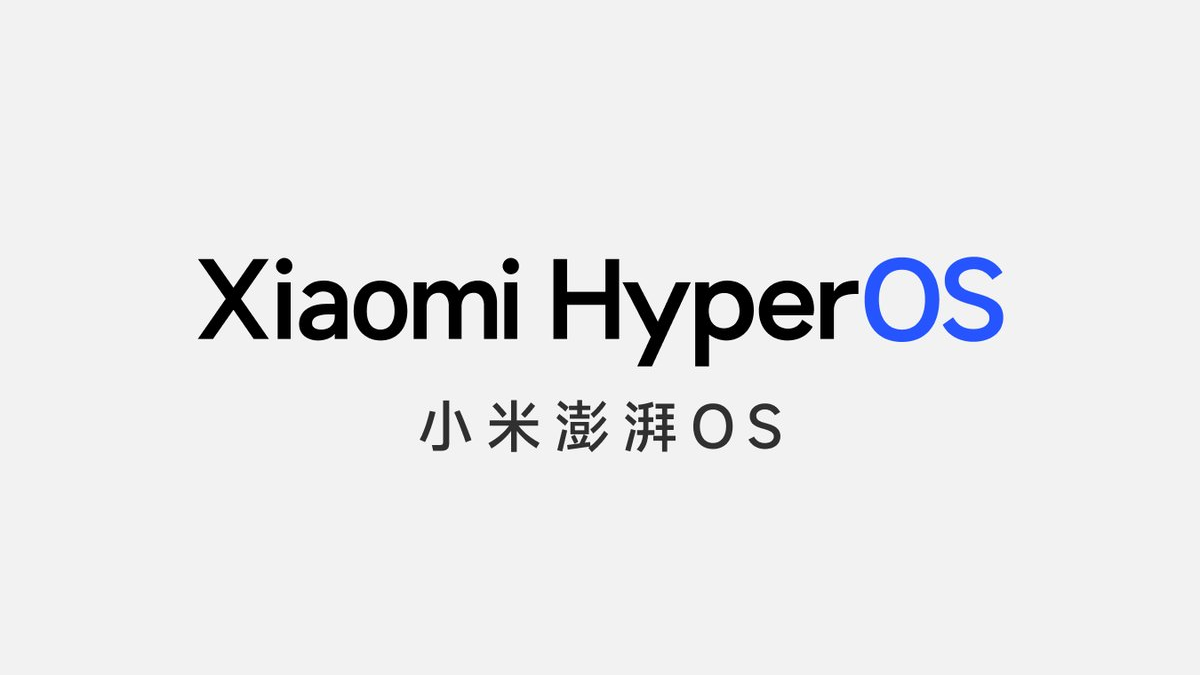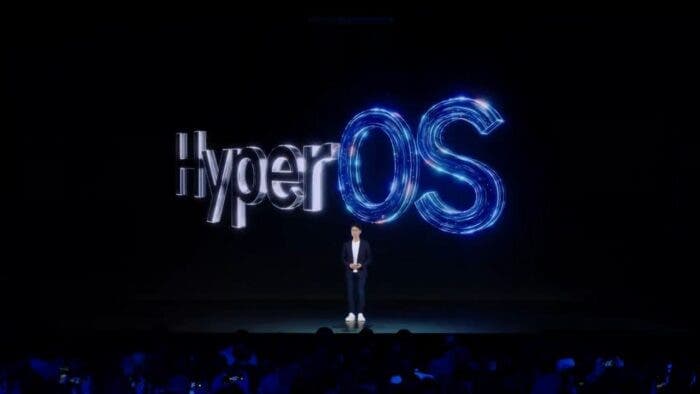In a little over a week, Xiaomi introduced its latest Android operating system. While the Xiaomi 14 series smartphones come equipped with this new OS straight out of the box, Xiaomi enthusiasts are ready as the company gears up to bring this update to a wider range of phones in the weeks to come. Initially launching in China, the global rollout plan for the Xiaomi HyperOS has recently surfaced.
Xiaomi’s New HyperOS: Global Rollout Plans Unveiled

What’s got Xiaomi enthusiasts buzzing is that the company is already testing this fresh update on a select number of devices worldwide. Intriguingly, these phones are currently undergoing trials of the HyperOS. And the twist here is that it’s based on Android 14. This could mean that both Android 14 and HyperOS will be unleashed at the same time. But here’s the catch: those already running Android 14 beta with MIUI 14 should anticipate receiving the stable Android 14 update with MIUI before transitioning to HyperOS.
According to Gsmchina, nine Xiaomi phones are part of this global HyperOS testing, and they’re likely to be among the first to savor the upgrade. It’s worth noting that the list doesn’t feature any Redmi or POCO phones, but don’t lose hope just yet – these devices might still get a piece of the action.
While the latest Xiaomi HyperOS global rollout plan appears to focus on Xiaomi phones, it’s anyone’s guess whether separate plans will surface for Redmi and POCO models. However, given that many POCO and Redmi phones are essentially revamped Xiaomi phones, there’s a good chance that the update will eventually trickle down to all these models.
Here’s a peek at the current Xiaomi HyperOS global rollout plan:
- Xiaomi 13
- Xiaomi 13 Pro
- Xiaomi 13 Ultra
- Xiaomi 13T
- Xiaomi 13T Pro
- Xiaomi 12T Pro
- Xiaomi 12T
- Xiaomi 11T
- Xiaomi Pad 6
As we speak, these selected devices are internally testing the update. Meaning that the public release isn’t quite ready for prime time. Xiaomi has placed a priority on these devices, so they should be the first to enjoy the update. While the official schedule points to a Q1, 2024 release, there’s hope that we might see it roll out sooner, perhaps even by the end of this year.
HyperOS features and improvements:

- Improved performance and power efficiency: HyperOS is said to be lighter and faster than MIUI. Thanks to a number of technical optimizations, including refined scheduling capabilities. This results in a more stable frame rate and lower power consumption when running resource-intensive games and apps.
- AI-powered features: HyperOS utilizes large foundation models to empower system applications. This enables new features such as direct access to text generation capabilities via the Xiaomi AI Assistant, enhanced real-time subtitles, and the ability to search for images in photo albums and create AI images based on existing portraits using spoken phrases.
- Seamless device switching and remote access: HyperOS is designed to unify all Xiaomi devices into a single integrated system. This allows for seamless device switching, remote access to data and apps, and cross-device collaboration.
- Enhanced security: HyperOS features a number of security enhancements, including end-to-end encryption and improved malware detection.
In addition to these new features, HyperOS also features a refreshed user interface with a more modern and streamlined design language.
Significance of the HyperOS update
The HyperOS update is significant for a number of reasons. First, it represents a major shift in Xiaomi’s software strategy. MIUI has been Xiaomi’s custom Android skin for over a decade, but it has been criticized for being cluttered and bloated. HyperOS is a fresh start, with a new design and a focus on performance and security.
Second, HyperOS is designed to unify Xiaomi’s entire ecosystem of devices. This includes smartphones, smart home products, and even future endeavors like connected cars. This could make it easier for users to manage their devices and data, and it could also open up new possibilities for cross-device collaboration.
Third, HyperOS is a sign of Xiaomi’s growing ambitions. The company is no longer just a budget smartphone maker. It is now one of the leading smartphone manufacturers in the world, and it is expanding into new markets such as IoT and wearables. HyperOS is a key part of this strategy, and it could help Xiaomi to further differentiate itself from its competitors.
Impact of HyperOS on the smartphone market and user experience
The HyperOS update is likely to have a positive impact on the smartphone market and user experience. Xiaomi is one of the largest smartphone manufacturers in the world, so its new operating system will be available to a wide range of users. HyperOS is also likely to be more competitive with other custom Android skins, such as Samsung One UI and Google Pixel UI.
In terms of user experience, HyperOS is likely to offer a number of benefits over MIUI. It is said to be faster and more efficient, and it features a number of new features such as AI-powered text generation and enhanced real-time subtitles. HyperOS is also designed to be more secure, with end-to-end encryption and improved malware detection capabilities.
Insights into using HyperOS on a Xiaomi device
I have not yet had the opportunity to use HyperOS on a Xiaomi device, as it is still in development. However, I am excited about the potential of this new operating system. I am particularly interested in the AI-powered features and the seamless device switching and remote access capabilities.
Here are some quotes from Xiaomi officials and industry experts on the HyperOS update:
- Lu Weibing, General Manager of Redmi Brand: “HyperOS is a major upgrade over MIUI, with a number of new features and improvements that make it a more powerful, efficient, and secure operating system.”
- Pan Jiutang: “HyperOS is a sign of Xiaomi’s growing ambitions to compete with the likes of Samsung and Google. The new operating system could help Xiaomi to further differentiate itself from its competitors and attract new users.”
- Ben Wood: “HyperOS is a significant development for Xiaomi. It is a new start for the company’s software strategy, and it has the potential to improve the user experience on Xiaomi devices.“
Overall, the HyperOS update is a significant development for Xiaomi and the smartphone market as a whole. It is a new operating system with a number of features and improvements that could make it more competitive and user-friendly than MIUI. I am excited to see how HyperOS evolves and how it is received by users.
Follow Gizchina.com on Google News for news and updates in the technology sector.





